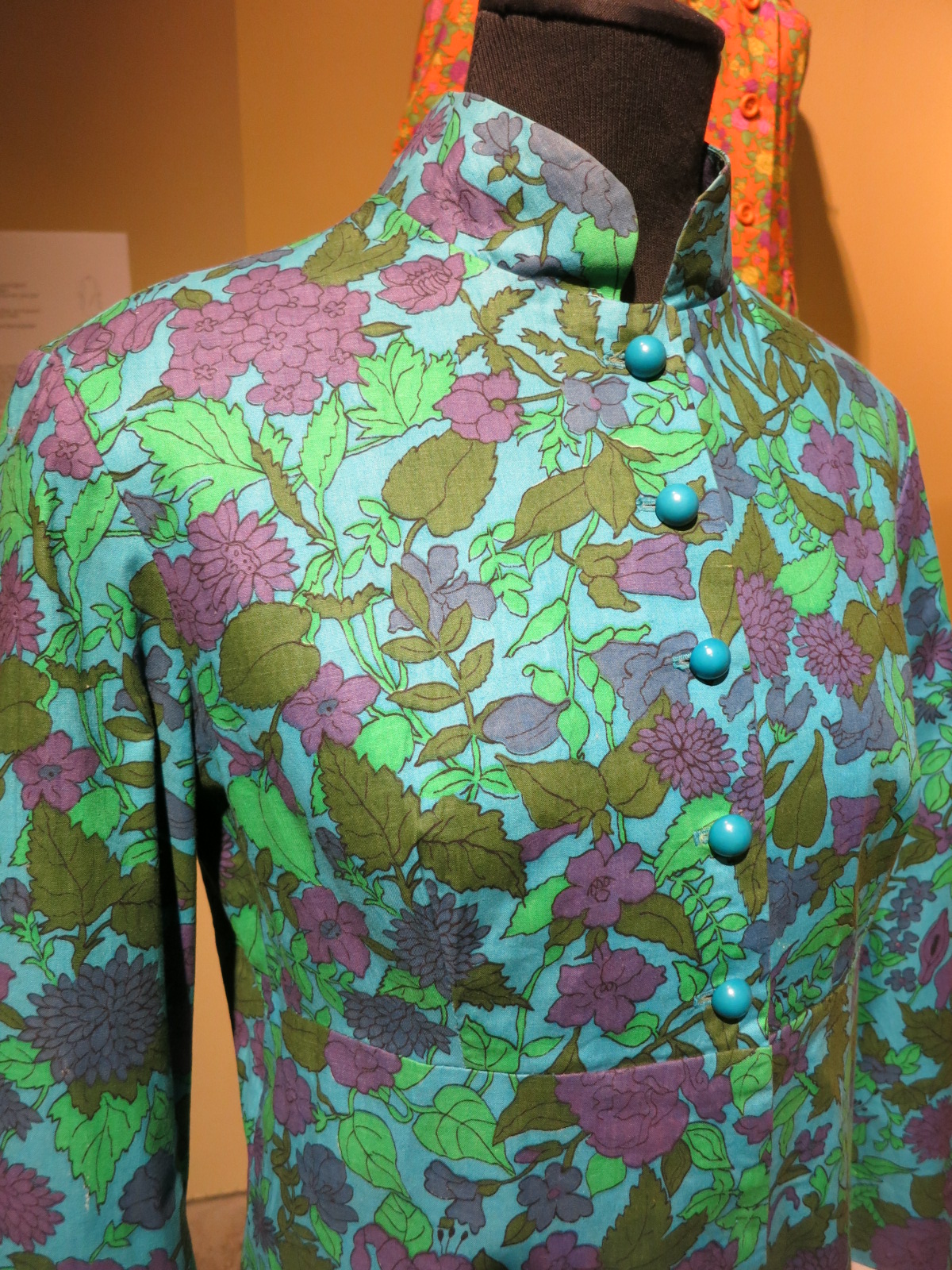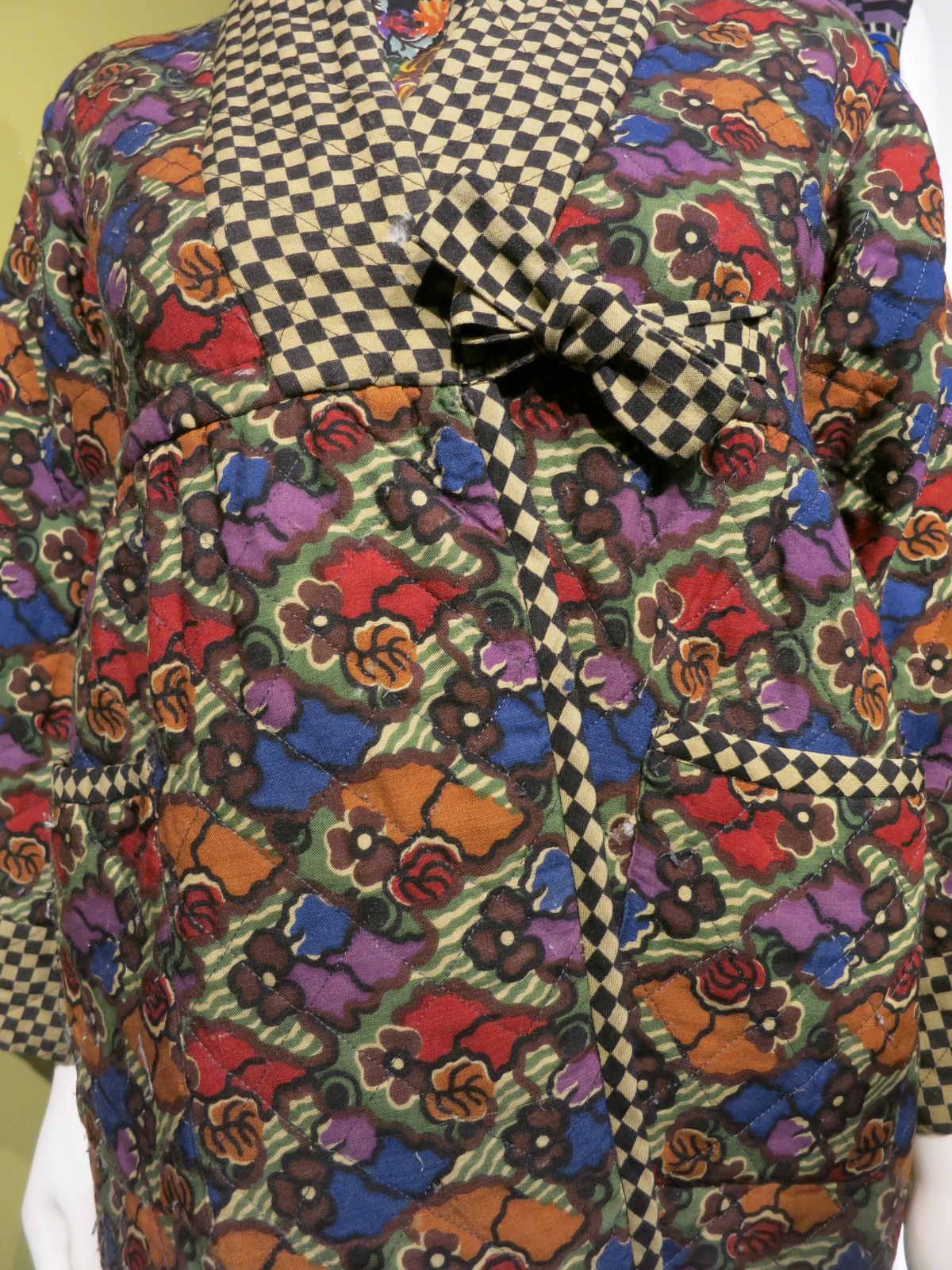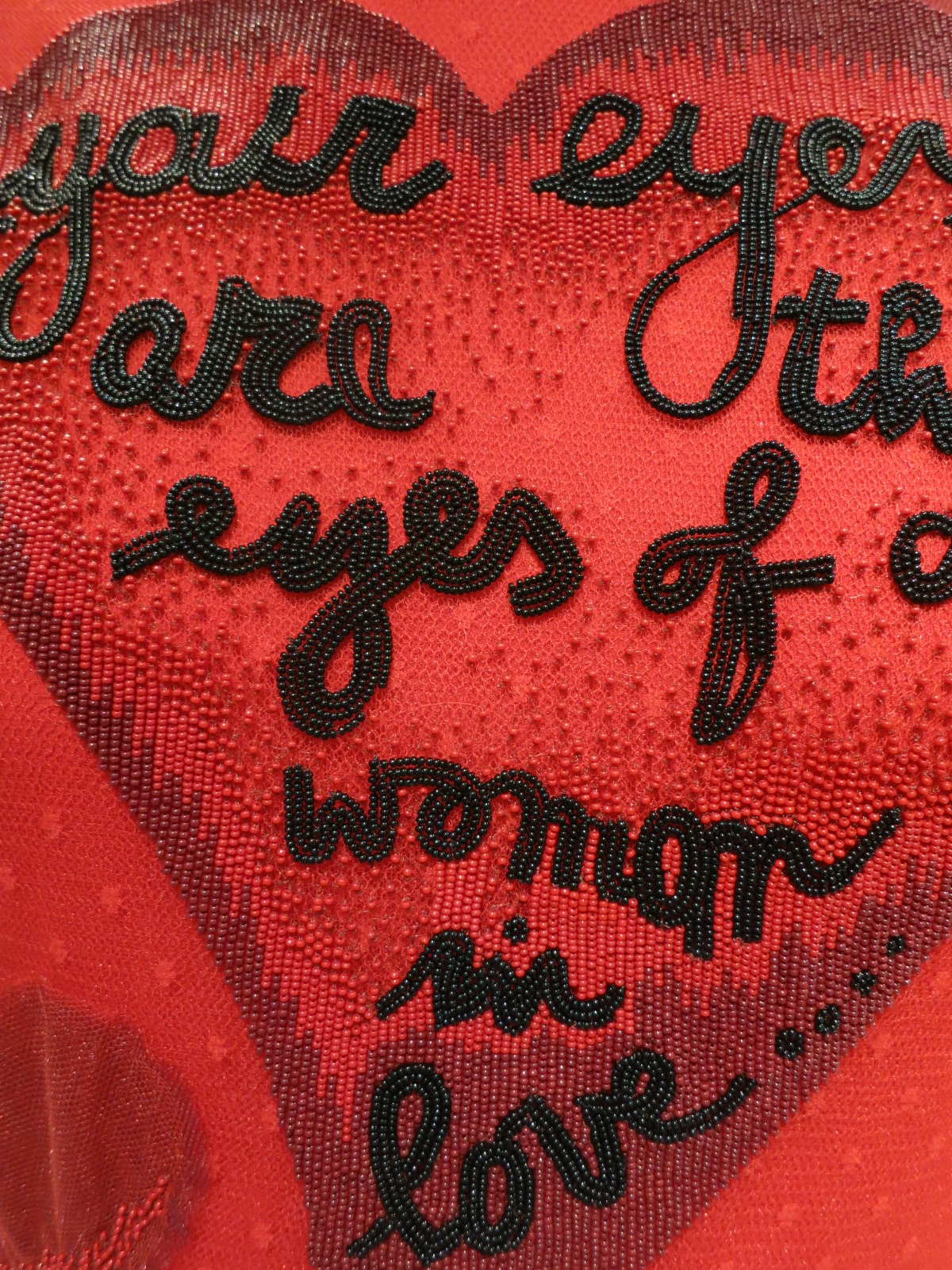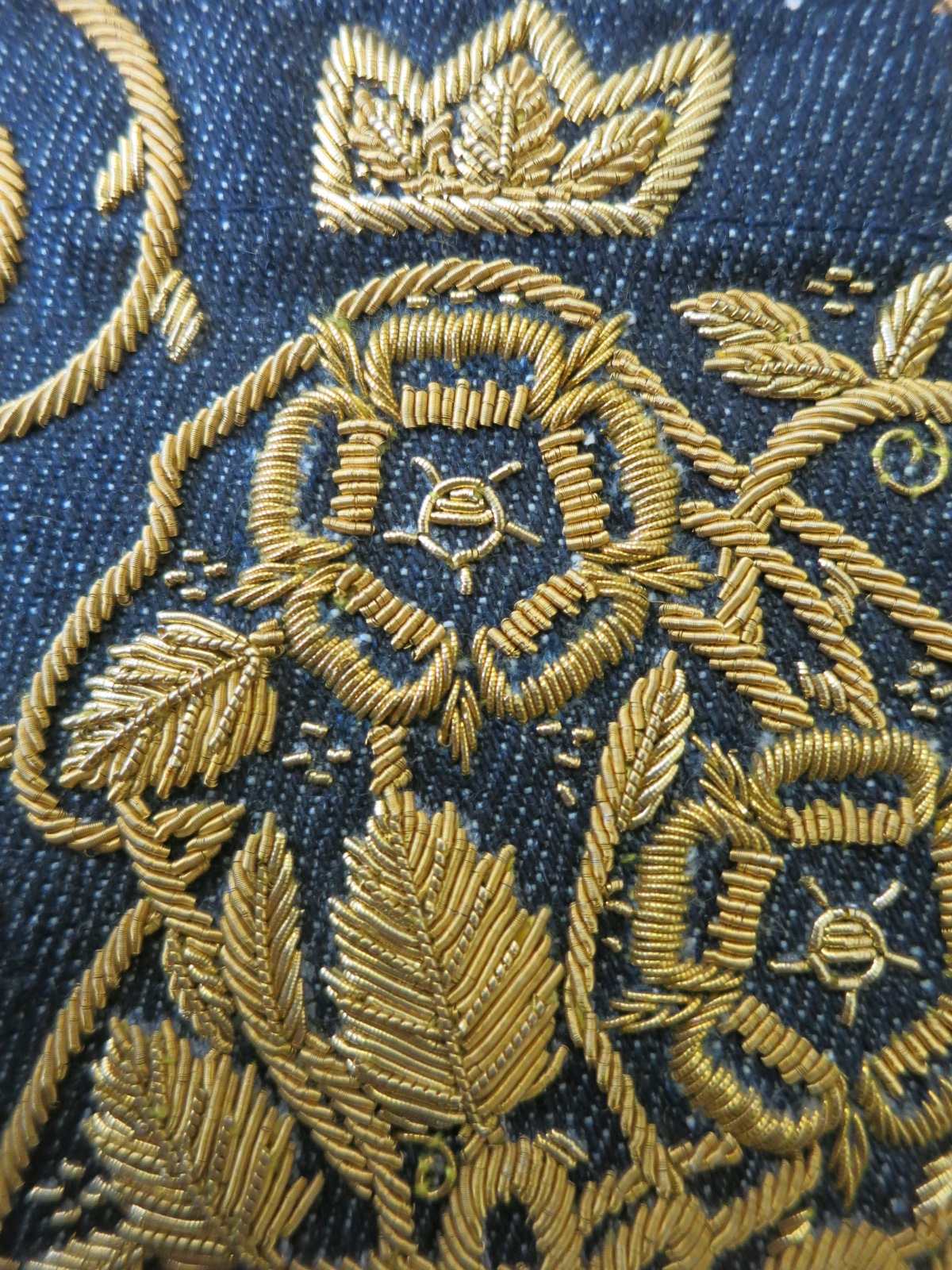31 Rue Cambord is where Chanel entertained and worked. It is a 4 storey building. In Chanel's time the 1st floor was a showroom, the 2nd floor for haute couture dressing, 3rd floor her apartment for entertaining only (she had a permanent apartment at the Ritz for sleeping) and her workrooms were on the 4th floor.
Coco Chanel 31 rue Cambord, Paris
Coco Chanel 31 rue Cambord, Paris.
This is the renowned faceted mirrored spiral staicase that Chanel designed. It connected all 4 floors. Supposedly she could stand in one particular spot and see what was happening on all floors!
Coco Chanel 31 rue Cambord, Paris. An embroidered gown from a 2015 Chanel collection.
Coco Chanel 31 rue Cambord, Paris. A detail of an embroidered gown from a 2015 Chanel collection.
I asked for permission to photograph this gown because 31 Rue Cambord is 'hallowed ground' - I could happily 'snap away' in the Galeries Lafayette, but it would not be at all appropriate in this couture showroom. Obviously permission was granted, but it was for this dress only!
Coco Chanel 31 rue Cambord, Paris. A beautiful ensemble from a 2015 Chanel collection.
Of course there is nothing to stop you from photographing gorgeous garments that are in the windows! But you do have to cope with the reflections in the windows.
Coco Chanel 31 rue Cambord, Paris. A beautiful ensemble from a 2015 Chanel collection.
Coco Chanel 31 rue Cambord, Paris. A beautiful ensemble from a 2015 Chanel collection.
Coco Chanel 31 rue Cambord, Paris. A beautiful ensemble from a 2015 Chanel collection.



































































